Start 14-Day Trial Subscription
*No credit card required

Four Historic London Pubs
London is a city heavy with millennia of history, the development of Western civilization, the rise and fall of empires, and of course, good drink. In this story, I detail my experiences at four historic London pubs, including their delectable brews and the fascinating backstories held therein.
A sprawling megalopolis, the London of today is almost unrecognizable from its appearance even 20 years ago, as multiple new landmarks grace the city’s skyline, such as the London Eye, the Shard, City Hall, 20 Fenchurch (the Walkie Talkie) and The Gherkin (named for its singular pickle-like appearance).
One area in which the city has not changed is its adoration of public houses and the high-quality lagers and ales they serve. Citizens of England and the United Kingdom are known for their ability to quaff pints with the best of them, and many of those pints are imbibed on the premises of the some of the most historic and characterful pubs in the world.
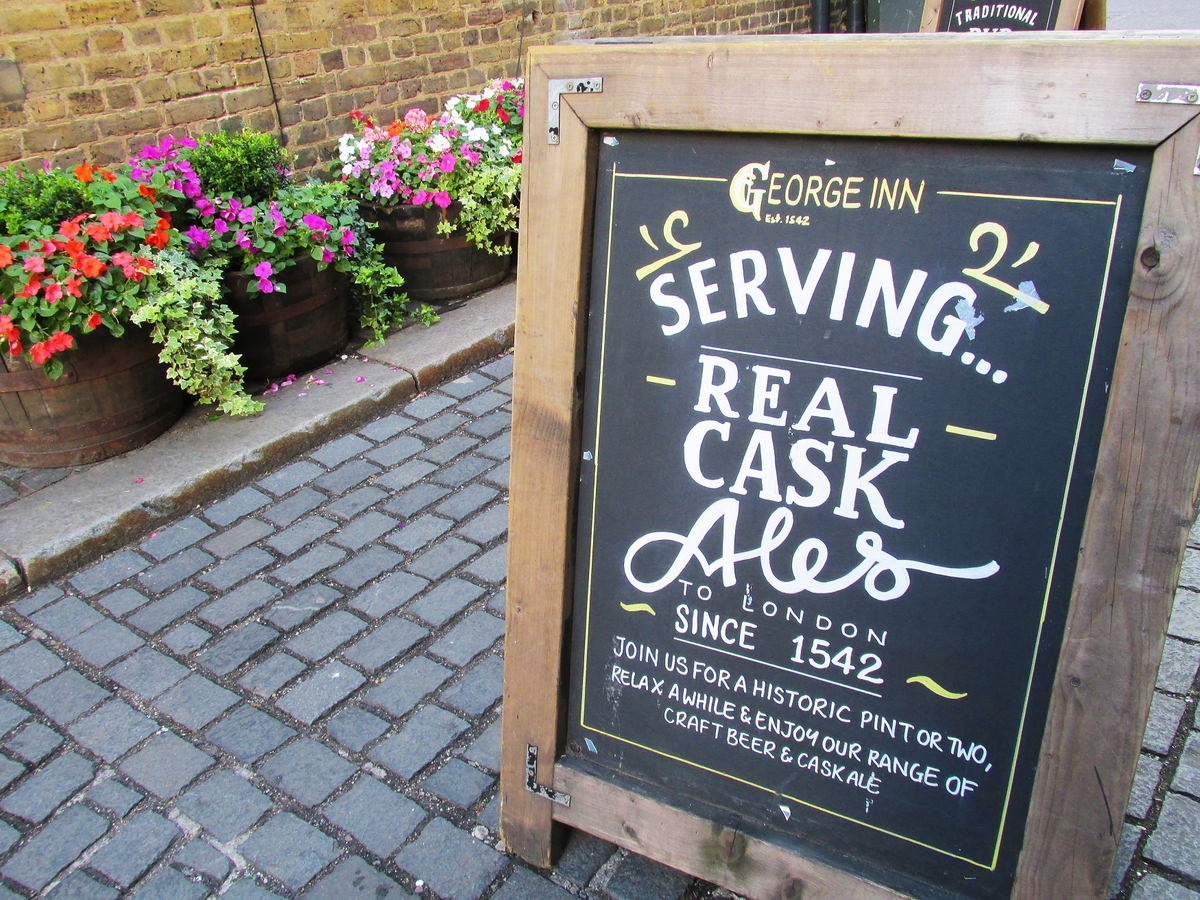
London is a city heavy with millennia of history, the development of Western civilization, the rise and fall of empires, and of course, good drink.
During a recent visit to London, I made a point to soak up the ambiance and wares at four unique pubs, all of which were within walking distance of one another… that is, if you don’t mind strolling over one of the most picturesque and elegantly designed public footbridges in the world.
The Millennium Bridge, which links St. Paul’s Cathedral with the Tate Modern Gallery, provides plenty of spots for windswept selfies and touristy snapshots of the River Thames, although that is not where our tale began.
After stepping off the platform at St. Paul’s Station on the London Underground’s Central Line, I ambled off to my first stop on this mini-pub crawl: Ye Olde Cheshire Cheese at 145 Fleet Street.
A mere 8-minute walk from the evocative dome of St. Paul’s Cathedral, Ye Olde Cheshire Cheese is a Grade II Listed public house, making it only slightly less historically significant than landmarks such as the Houses of Parliament and Tower Bridge (showing that places to imbibe delectable brews in the city are clearly of high importance to Londoners).

Ye Olde Cheshire Cheese is a Grade II Listed public house, making it only slightly less historically significant than landmarks such as the Houses of Parliament and Tower Bridge.
First erected nearly 600 years ago in 1538 and rebuilt after the Great Fire of 1666, Ye Olde Cheshire Cheese is housed in a surprisingly narrow building down an inconspicuous side street – so inconspicuous, in fact, that I almost missed the small round sign jutting out into Fleet Street that bore the pub’s name.
Upon facing the façade of Ye Olde Cheshire Cheese, one is greeted to an unassuming brown building with a plain black-and-white sign. To the right of that sign is a list of the monarchs that have reigned during the pub’s existence, a stunningly simple but effective way of exposing the incredible amount of time that this plain-looking pub has been in existence.
Upon entering, there is a small side room with a few taps and even fewer tables, which is where I ordered a Samuel Smith’s Old Brewery Bitter to quench my thirst. The wooden bar and floorboards were worn to a smooth veneer, evidence of the generations of patrons who have entered the bar to enjoy its vices.
I was confused at first, thinking: “Is this it?” Further exploring the building, I discovered a small stairway that led downstairs to a dimly lit, underground beer crypt where the majority of the seating (and another bar with far more taps) was located.
After hunching down and barely squeezing through one of the narrowest stairwells in existence, which was built for the “minuscule 16th-century patrons,” according to an amused pubgoer walking in front of me, the area below the top of the pub was more inviting and interesting than I could have ever imagined.
The dark timber-lined room I found at the bottom of the stairs was dimly lit with yellow bulbs and featured multiple chairs, tables and cozy booths. This downstairs “dungeon” at Ye Olde Cheshire Cheese truly felt as if one had traveled back to the days when writers and luminaries such as Charles Dickens, W.B. Yeats, Alfred Tennyson, Sir Arthur Conan Doyle and Mark Twain all drank and dined at Ye Olde Cheshire Cheese.
It’s an amazing feeling, and one that made me feel truly connected to the city of London. The deliciously earthy and easy-drinking Sam Smith’s beer didn’t hurt on that count, either. The Old Brewery Bitter is brewed with hard water drawn from a well dating to 1758 in Yorkshire and featured evocatively malty and toffee-like aromas with a creamy smoothness throughout.

Samuel Smith's Old Brewery Bitter is brewed with hard water drawn from a well dating to 1758 in Yorkshire and featured evocatively malty and toffee-like aromas with a creamy smoothness throughout.
Though I was loath to leave the Cheshire Cheese, there was another pub that started with “Ye Olde” that was only a 3-minute walk away. Ye Olde Cock Tavern was built in the late 1600s but was later taken down and rebuilt on the other side of the road in the 1880s.
Sadly, many of original furnishings and ornaments were destroyed in a fire in the 1990s. Since then, it has been restored and rejuvenated – making this historic London pub look more modern and seem much newer than it actually is.
Ye Olde Cock Tavern is a trendy Greene King public house, and I immediately ordered a Greene King IPA, the flagship brew of the United Kingdom’s largest pub retailer and brewer, which was founded in 1799. This beautiful amber-hued English IPA has plenty of malty body and a smooth bitterness, and at a mouthwatering 3.8 percent ABV, it’s the perfect accompaniment for walking (upright) to and fro fine drinking establishments.
Nearby the main bar, bespoke-suited businessmen reserve the pub’s private function rooms for a potential client. Upstairs, a recently added gin bar was just gearing up for the night’s festivities. Though it was quiet when I arrived, the upstairs area was well-furnished and full of interesting areas to sit and chat, stand and drink, or even play a quick round of shuffleboard.
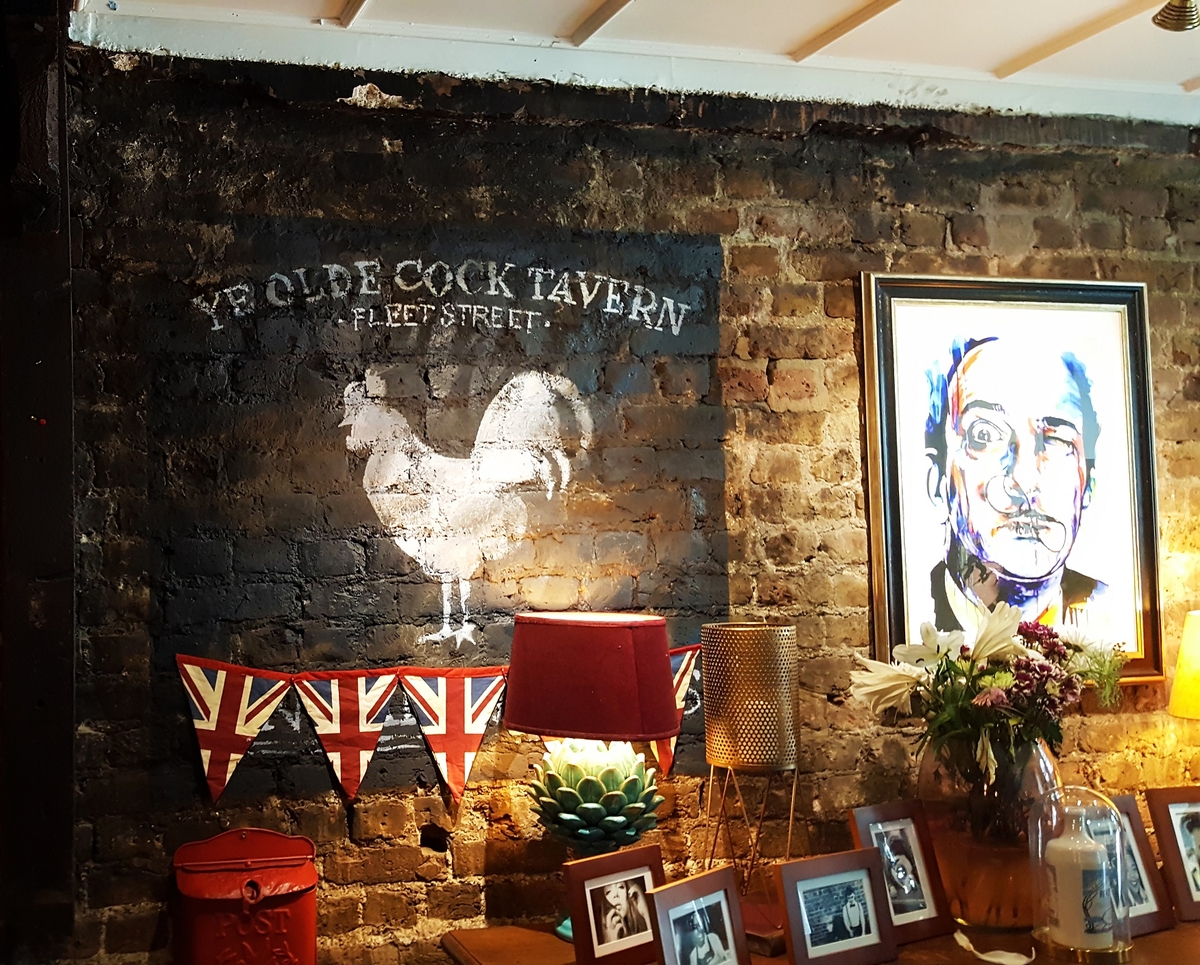
The decor in the entranceway of Ye Olde Cock Tavern. Many of the pub's original furnishings were destroyed in a fire in the 1990s.
After swiftly sipping my IPA and enjoying a hearty ham and cheese toastie, it was off to my next stop: The Anchor Bankside, which required me to ambulate over the aforementioned Millennium Bridge.
Though an exceedingly warm day (I was treated to record temperatures not seen since the 1970s while I was in London), the cool, sharp breeze off the River Thames always makes for a refreshing change – especially with a pint or two of real ale rumbling around in my tummy.
After bypassing the throngs of tourists by the Millennium and the Tate Modern museum, Anchor Bankside beckoned – though I was soon met with perhaps even more tourists at this pub than I had seen at the Millennium and Tate.
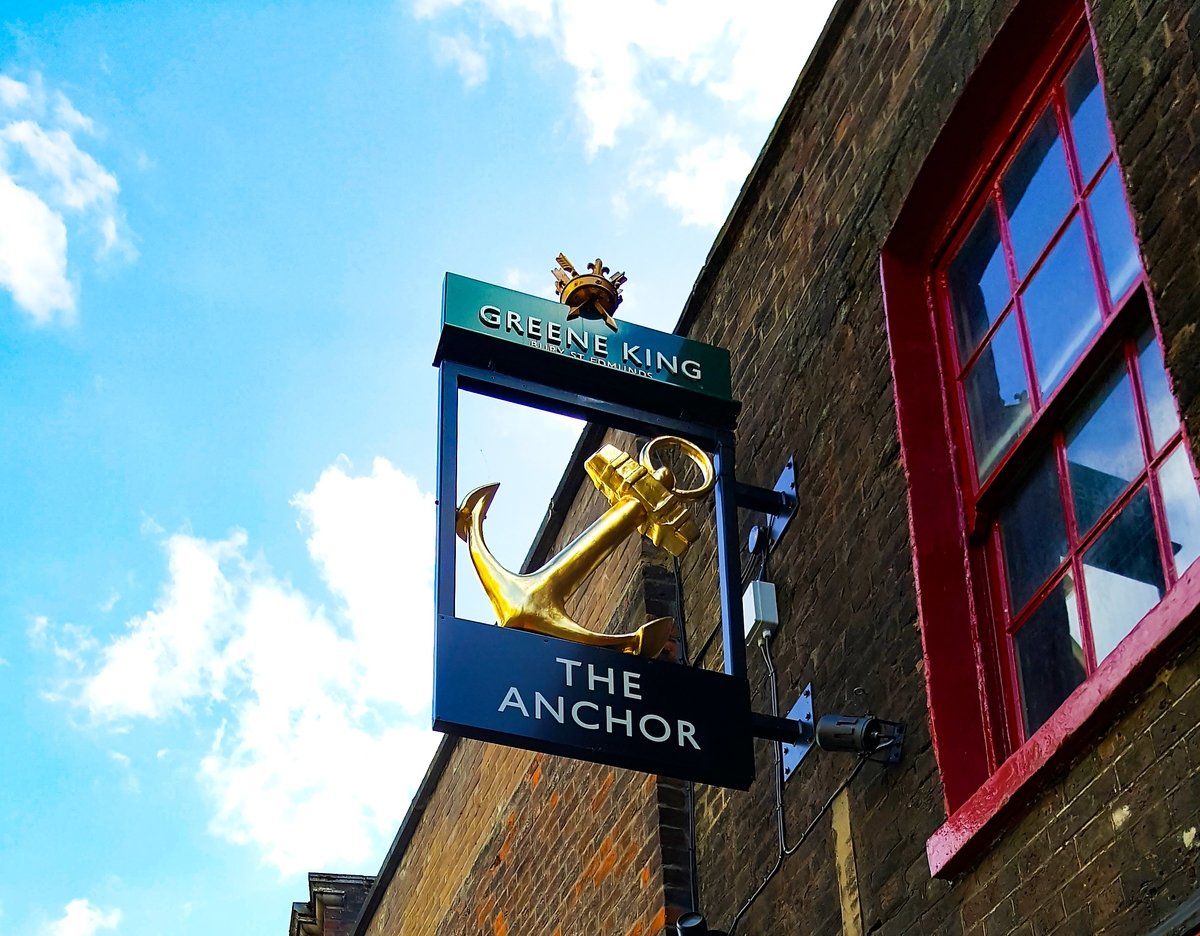
The Anchor Bankside beckoned, though the popular and tourist-laden Millennium Bridge had to be traversed first.
Like many of London’s historic pubs, Anchor Bankside has been rebuilt on numerous occasions, though there has been a public house/tavern located at this location for more than 800 years – incredible.
A gorgeous building, Anchor Bankside is resplendent with gold and bright red trimming on its facade. Heaving with people – both locals and lead-footed tourists – the pub is clearly doing impressive business. In the modern metropolis that is London in 2018, sometimes having a pint of beer with friends by the banks of the River Thames is all one needs.
I certainly felt that way, as I ordered a Camden Town Brewery Pale Ale from the overworked bartender and quickly scurried back to the outdoor tables, which were an exceptionally prized commodity on such a blisteringly hot day.
Soaking in the atmosphere of multiple languages and the olfactory wash of the tide from the Thames, I also took in the hoppy and complex flavors and aromas of the Camden Town Pale, which features 38 IBUs and 4.0 percent ABV. While made with American hops, it’s crafted “to more British tastes” according to the brewery. Camden Town Brewery is a newcomer on the British beer scene and features a core lineup grounded in European brewing traditions. As I imbibed and observed the flow of humanity, it wasn’t hard to imagine patrons from years past enjoying this same path – moving from the Cheshire Cheese to the Cock Tavern to the Anchor and finally finishing with my last stop: The George Inn.
A 6-minute jaunt from the Anchor Bankside, The George Inn’s history is relatively hard to trace. The first map of the Southwark area (circa 1543) had The George Inn clearly labeled, so this famous pub has been around for at least 575 years, though it is likely far older.
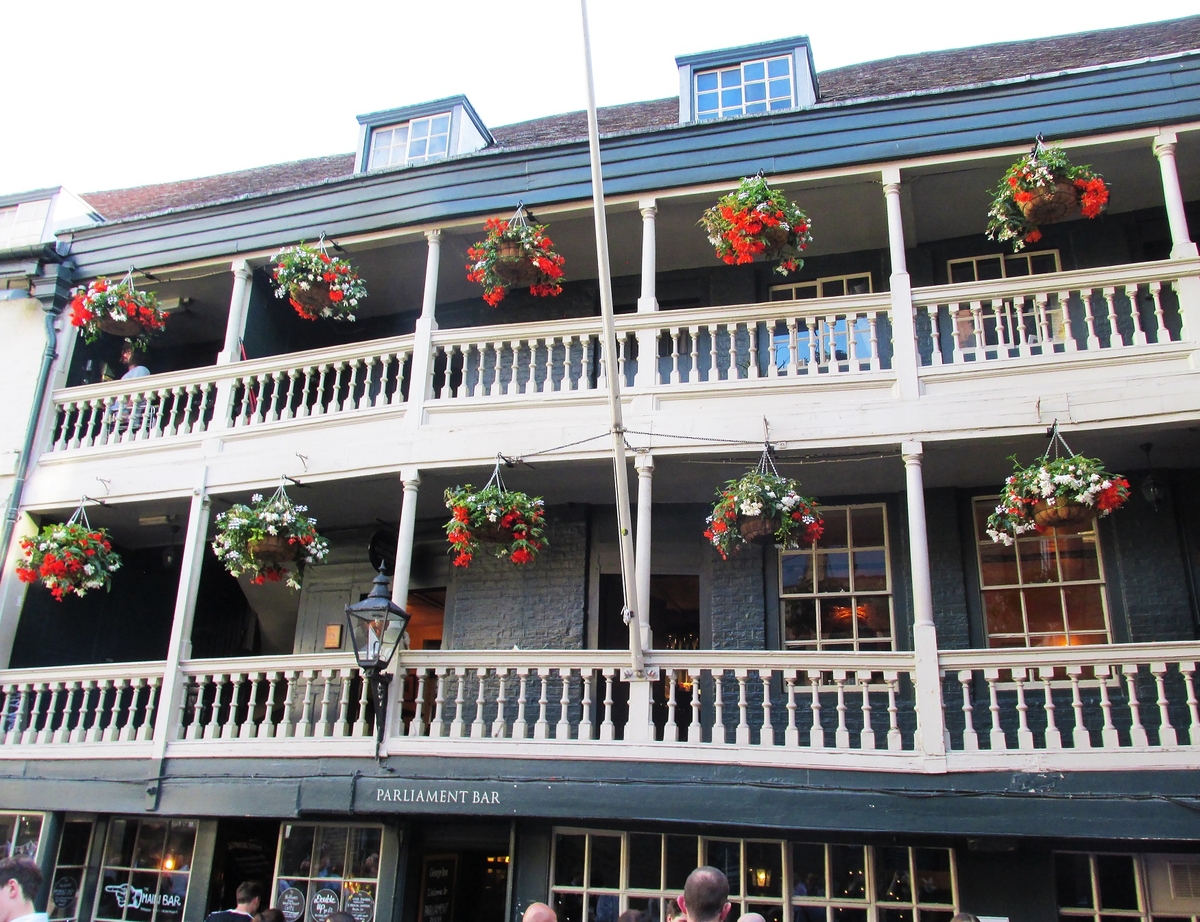
The first map of the Southwark area of London (circa 1543) had The George Inn clearly labeled, so this famous pub has been around for at least 575 years, though it is likely far older.
Rebuilt in 1677 after a serious fire, The George Inn one-ups our previous pubs, as it is one of only 12 pubs in the United Kingdom that is a Grade I Listed public house, which, again, makes it as historically significant as major icons such as the British Museum, 10 Downing Street and the Royal Albert Hall. Not bad!
Bustling with more locals than tourists, I found The George Inn surreptitiously located down a gated side street. It is the only surviving London galleried coaching inn, featuring three levels where weary horse-and-carted travelers would stop and stay on their long journeys.
Today’s patrons are less dusty and fatigued; when I walked in, many young professionals were enjoying a pint or more with friends and co-workers, and I couldn’t help but partake as well.
With a packed beer garden and a beautiful, cobblestone courtyard, The George Inn served as a perfect cap to a day of drinking fine ale, and appreciating the rich tapestry of human ‒ and beer ‒ history that has been woven over the centuries in the great city of London.
If you follow in my steps, I can’t promise that you won’t end up slightly squiffy from all those tipples you imbibe at each stop, but these four historic London pubs represent the best of what London has to offer – allowing you to feel connected to everyone who has ever enjoyed a drink in each of those storied establishments simply by touching your lips to a glass full of warming ale.

The George Inn served as a perfect cap to a day of drinking fine ale, and appreciating the rich tapestry of human ‒ and beer ‒ history that has been woven over the centuries in the great city of London.
Photos Courtesy Chris Guest



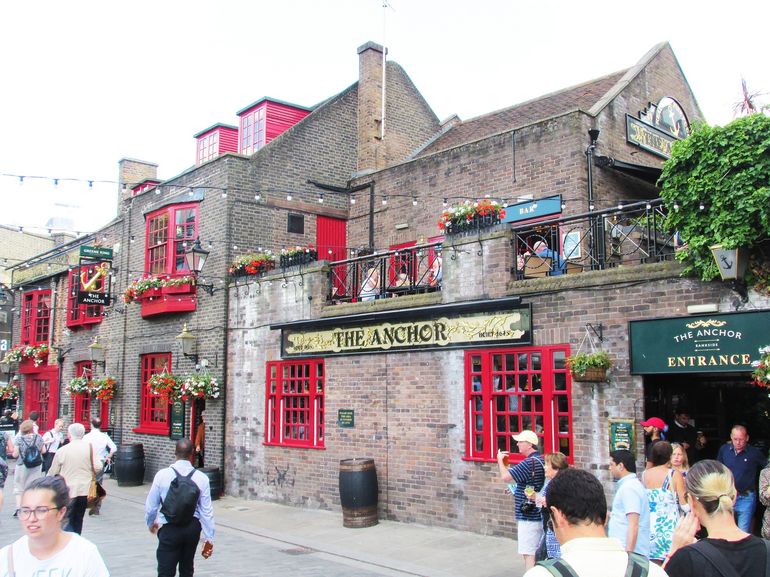
Comments